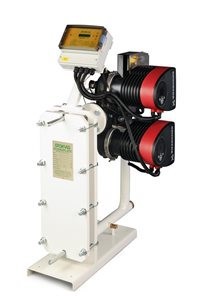

|
Edward Lowton
Editor |


|
| Home> | Energy Management | >Boilers and burners | >Plate heat exchangers |
Plate heat exchangers
11 December 2016
Stokvis says there are many advantages of a hot water system which uses a plate heat exchanger (PHE) and does not store hot water including the fact that the water is heated instantaneously and only when required, so it is intrinsically energy efficient.

A PHE consists of a pack of plates (usually stainless steel) to transfer heat from the primary fluid to the secondary fluid. The plates and gaskets are arranged to form alternating channels between the primary and secondary fluids. Arranged in this way the plates have an extremely large heat transfer surface area and therefore considerably high loads can be achieved from a very compact plate heat exchanger.
For large commercial applications a PHE is ideal as it is capable of producing hot water instantly and constantly at peak times. Calorifiers and direct-fired water heaters can be less reliable and can empty of hot water should higher than normal demands occur. Plate heat exchangers are easy to maintain. An engineer can usually strip, clean and re-assemble a typical unit within an hour, and they are easy to keep clean.
Because they are non-storage units, PHEs present no risk of contamination of the water with legionella microbes. The water is heated instantly on demand, and therefore the bacteria, which thrive in wet environments at temperatures between about 20 and 50 deg C, have no chance to breed.

















